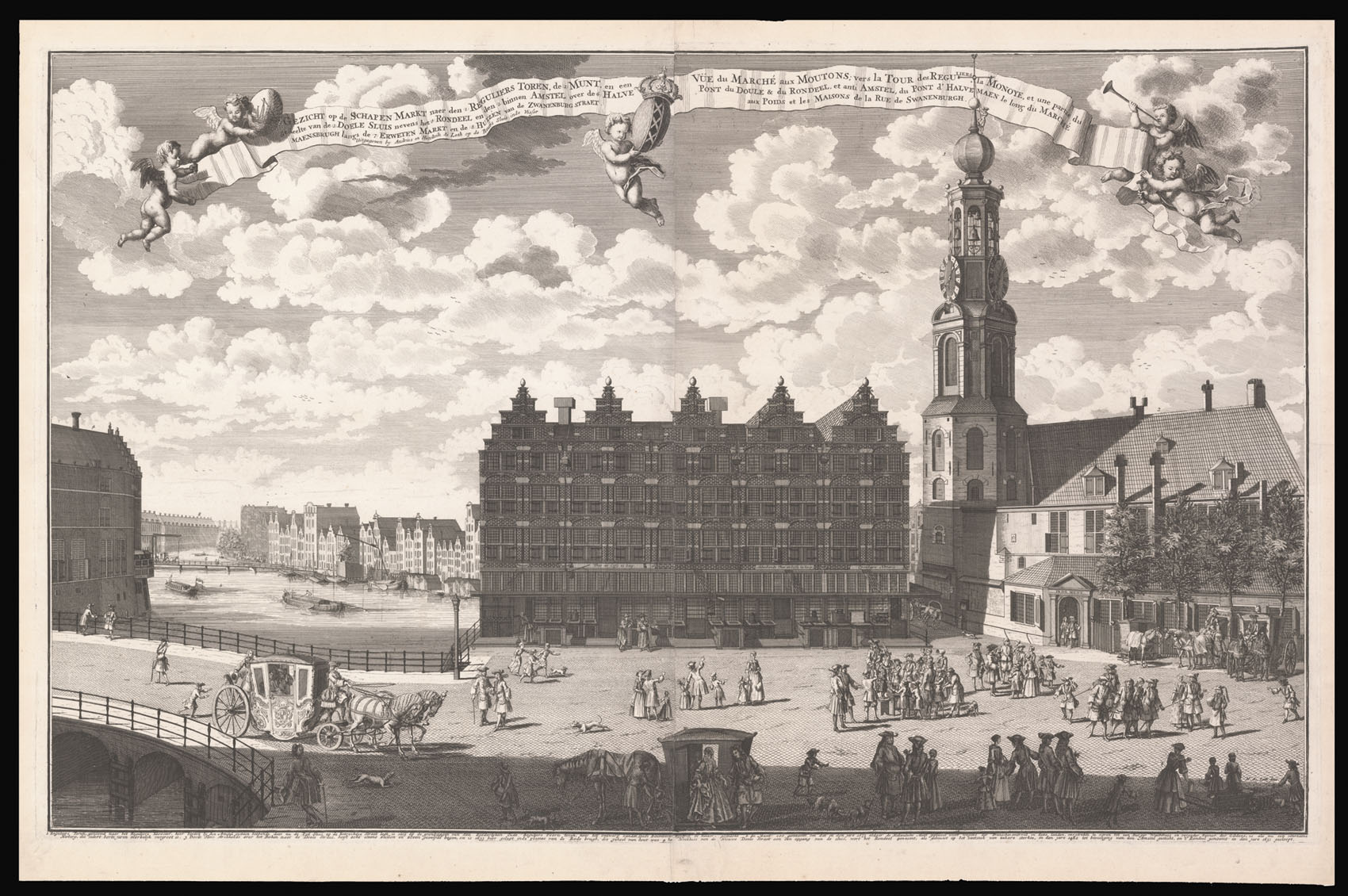

A view of the Muntplien with the Munttoren and the Englese Huizen
Gezicht op de Schapen Markt naer den Reguliers Toren, de Munt, en een ge deelte van de Doele Sluis nevens het Rondeel en den binnen Amstel over de Halve Maensbrugh langs de Erweten Markt en de Huizen van de Zwanenburg Straet.
- Author: DE LETH, Andries; DE LETH, Hendrik
- Publication place: Amsterdam,
- Publisher: Andries De Leth, Hendrik De Leth
- Publication date: [c1720].
- Physical description: Etching with engraving, on two sheets joined.
- Dimensions: 570 by 910mm. (22.5 by 35.75 inches).
- Inventory reference: 14399
Notes
A view of the Schapenplien (Muntplien) with the Munttoren (The Mint Tower), the Englese Huizen (English Houses), and the Doelensluis.
The Muntplein is named after the Munttoren (or simply Munt) tower which stands on this square. This tower was once part of the three main medieval city gates. In the seventeenth century, it temporarily served as a mint, hence the name. The square was originally named Schapenplein and in the seventeenth century was enclosed by the Englese Huizen, shown in the centre. The buildings were constructed in 1624, and would be demolished in the late nineteenth century for the widening of the bridge over the Singel, as a result of which the enclosed Schapenplein disappeared. The new square was given the name Sophiaplein, after the deceased first wife of King William III, but was soon called the Muntplein or in short, the Munt.
Andries de Leth (1662-1731) and Hendrik de Leth (1692-1759) were engravers, publishers, and mapmakers working in Amsterdam during the first half of the eighteenth century.
The Muntplein is named after the Munttoren (or simply Munt) tower which stands on this square. This tower was once part of the three main medieval city gates. In the seventeenth century, it temporarily served as a mint, hence the name. The square was originally named Schapenplein and in the seventeenth century was enclosed by the Englese Huizen, shown in the centre. The buildings were constructed in 1624, and would be demolished in the late nineteenth century for the widening of the bridge over the Singel, as a result of which the enclosed Schapenplein disappeared. The new square was given the name Sophiaplein, after the deceased first wife of King William III, but was soon called the Muntplein or in short, the Munt.
Andries de Leth (1662-1731) and Hendrik de Leth (1692-1759) were engravers, publishers, and mapmakers working in Amsterdam during the first half of the eighteenth century.
Bibliography
- R.W.P. de Vries, auction, 1925: 277.
Image gallery
/
 Rare Maps
Rare Maps  Rare Atlases
Rare Atlases  Rare Books
Rare Books  Rare Prints
Rare Prints  Globes and Planetaria
Globes and Planetaria 










